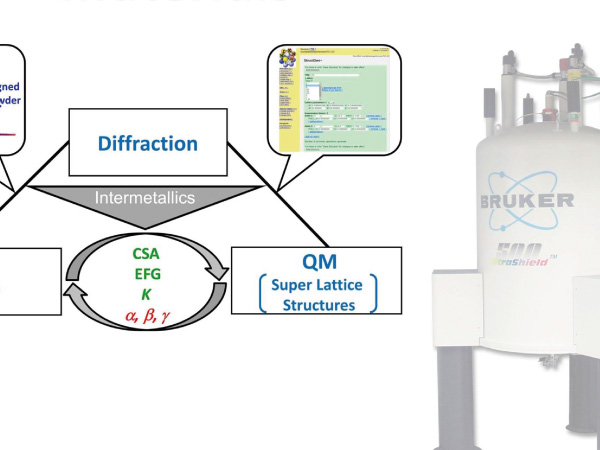Modern functional materials possess well defined properties such as thermoelectricity, magnetism, ion conductivity, or switchable electric conductivity in phase change materials (PCMs). These properties are often related to local ordering of the atoms e.g. disorder and therefore to details of the atomic arrangements. Especially diffraction methods are routinely used to determine the structure of crystalline materials. But these techniques suffer on the leakage of short range information to study the local atomic arrangements. Nuclear Magnetic Resonance (NMR) as a local probe provides this short range information and is therefore suited to deliver the desired information. Furthermore, the NMR signals can be calculated ab-initio on basis of density functional theory (DFT) and a given structure model.
Intermetallic phases (IPs) are an important class of materials for industrial applications for example in PCMs or in thermoelectrics but also for academic research. Disorder is almost a trademark of this class of materials, thus IPs provide challenging compounds to study their structure including varying local atomic arrangements. A strategy based on diffraction techniques, NMR, and quantum mechanical calculations was derived on various IPs to investigate structure-bonding-property relationships in detail.
Frank Haarmann studied chemistry at the University of Dortmund and obtained his diploma in 1996. The Ph. D. work focussing on molecular motions in solid state was done in the group of Prof. Dr. Herbert Jacobs at University of Dortmund. During that time he had several stays at the Rutherford Appleton Laboratory in the UK, the Institute Laue-Langevin in Grenoble, France and the Hahn-Meitner Institut in Berlin, Germany for elastic and inelastic neutron scattering experiments. In 2001 he moved for a PostDoc to the Max Planck Institute for Chemical Physics of Solids (MPI-CPfS) in Dresden, Germany. There, he established a group for NMR spectroscopy on intermetallic compounds. From 2009 to 2016 he held the position as head of a Junior Research Group at RWTH Aachen, Germany. Currently he is working at RWTH Aachen, University in close collaboration with the MPI-CPfS on strategies to study local atomic order in intermetallic compounds. The main aim is to introduce these strategies into materials research to get a deeper understanding of structure-bonding-property relationships of functional materials.

